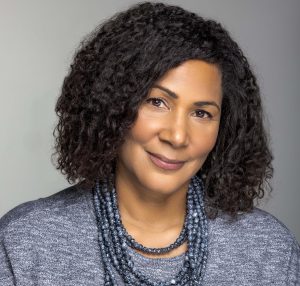
The Changing Landscape in College Admissions

Laurén Carter, a noted author and college-admissions expert, became Milton’s new dean of college counseling in July. Carter, who comes to Milton from the Sidwell Friends School in Washington, D.C., has decades’ worth of experience in independent school college guidance and university admissions. Her book, Mindful Admissions: An Insider’s Guide to Staying Sane, Applying Well, and Getting Accepted to College, provides students and families with practical advice for navigating the complicated admissions process. Carter joined Milton Magazine for a conversation this summer.
 What are some of the factors that make a particular college or university a good fit for a student?
What are some of the factors that make a particular college or university a good fit for a student?
When students embark on this journey, it is important to consider a range of factors that encompass both intellectual and emotional aspects, representing a balance between their head and their heart. To simplify the process, I frequently guide students to categorize these factors into three essential areas: academic fit, community fit, and personal fit.
Academic fit involves finding institutions that align with a student’s academic interests, goals, and learning style. It involves assessing the academic programs, faculty expertise, resources, and opportunities available at each college or university.
Community fit pertains to the social and cultural environment of the institution. It involves considering the campus culture, student organizations, extracurricular activities, diversity and inclusion efforts, and the overall sense of belonging that students may experience.
Personal fit emphasizes the student’s unique needs, values, and aspirations. It includes individual factors such as location, campus size and facilities, student support services, and opportunities for personal and professional growth.
There is no one-size-fits-all approach. The goal is to find a balance between academic, social, and personal factors that will contribute to a fulfilling college experience.
As college counselors, our role is to guide and support students in navigating these considerations, providing resources and insights to help them make informed decisions. Together, we can explore and assess the available options, ensuring that students find the best possible fit for their academic and personal growth.
With admissions to highly selective colleges becoming more and more competitive every year, how do you help both students and their families set expectations?
It’s important to focus on what students can control in their college process and to encourage them to strive for a well-balanced list of prospective schools they would be happy to attend. Gaining admission to a highly selective college is not a measure of a student’s worth or potential for success. Instead, it reflects the competitive nature of the applicant pool and the specific needs and priorities of each college.
My goal is to help families understand the ever-changing landscape of college admissions, including the evolving nature of selectivity. I also encourage students to reflect on their strengths, passions, and goals, and to identify colleges that align with their unique aspirations, and this helps them develop realistic expectations.
The process does require resilience and it is important to maintain a healthy perspective throughout the college application journey. We need to remind students that success is not solely defined by admission to a particular college, but by their ability to thrive and make meaningful contributions wherever they enroll.
By fostering open and honest communication, providing relevant and current admissions guidance, and emphasizing personal growth and well-being, my college counseling colleagues and I strive to support students and families in setting realistic expectations and navigating the college admissions process with confidence and resilience.
Your book takes a holistic approach to the admissions process, beginning in the first year of high school. What are some ways parents and guardians of high schoolers can start to have the conversation—and continue it through the high school years—about college without adding undue stress?
Having thoughtful conversations with high schoolers about higher education necessitates a sensitive and supportive approach. Parents and guardians can initiate this dialogue by creating an open and encouraging environment where students feel at ease discussing their aspirations, worries, and interests related to their educational future. Encouraging curiosity and exploration, families can facilitate activities that promote a college-going mindset, such as attending cultural events, artistic performances, or sporting events at local universities. This exposure to the transformative aspects of the college experience can help form a positive narrative around higher education without fixating on the pressures of admission.
It’s important for parents and guardians to listen actively, validate their teen’s feelings, and offer guidance without exerting pressure. They can help their children focus on personal growth, interests, and values, encouraging them to explore a range of educational and extracurricular options at Milton.
Additionally, it’s crucial to provide accurate information about the college admissions process, debunking common myths or misconceptions. By encouraging students to set realistic goals, celebrate their achievements, and view denials as redirections rather than failures, parents and guardians can foster resilience and a healthy perspective.
Ultimately, the key is to nurture a positive and supportive atmosphere that focuses on the individual student’s well-being, personal growth, and happiness. By embracing the college journey as a transformative and exciting experience, families can engage in ongoing conversations about college without placing unnecessary pressure on the student.
One of your tips is to not rule out a particular college because of tuition costs. Can you speak briefly about how students and families should think about college costs?
When considering college costs, it’s crucial for students and families to approach the topic with a comprehensive perspective. While tuition costs can be a significant factor, it shouldn’t automatically rule out a college from consideration. Here are a few strategies to help navigate college costs:
- Use online resources: Websites like MyinTuition.org provide quick and easy cost estimators based on your financial situation. Additionally, all U.S. colleges have net price calculators on their websites, which can provide families with an estimate of the actual cost after financial aid.
- Connect with admissions and financial aid officers: Reach out to the colleges of interest to discuss financial aid options and any available scholarships. Admissions and financial aid officers can provide valuable insights and guidance specific to each institution.
- Seek non-college based scholarships: Explore scholarships offered by organizations, community foundations, or local businesses. These scholarships can supplement college financial aid and reduce the overall cost.
- Consider long-term value: Look beyond the immediate cost and consider the long-term value of a college education. Research the job placement rates, alumni networks, and potential career opportunities associated with different colleges.
It is important for families to have open and honest conversations about finances. Together, you can create a budget, and by approaching college costs strategically and using available resources, students and families can make informed decisions while considering both financial feasibility and the overall value of the college experience.
What are some key ways the college admissions landscape has changed since you began your career?
Over the past 35 years, the college admissions landscape has undergone significant transformations, reshaping the entire process for students and families. One notable change is the increased competition among applicants. With the ease of applying to multiple colleges and the growing number of applicants, colleges have become more selective, making it more challenging for students to secure acceptance.
Another notable change is the increasing prevalence of early decision and early action plans. These plans enable students to potentially increase their chances of acceptance by applying to colleges that offer these options. By showcasing their sincere interest in attending a specific institution, students have the opportunity to potentially secure their place at their preferred college and alleviate some of the stress associated with the regular admissions process.
Technology has played a crucial role in this evolution. Students now have access to abundant resources online to research colleges, take virtual tours, read professor reviews, explore social media feeds, and gain insights into the student experience.
The application process itself, however, has become more complex. Many colleges require supplemental essays, which give students an opportunity to showcase their unique qualities and fit for the school. This additional requirement adds another layer of preparation and consideration for applicants.
The adoption of test-optional admissions policies means that colleges recognize that standardized tests may not accurately reflect a student’s abilities and potential. Colleges are placing less emphasis on test scores and considering a broader range of factors in their admissions decisions.
Over the years, colleges have been actively working towards enhancing access and promoting diversity. In response to recent developments, such as the Supreme Court ruling to end race-conscious admissions, colleges and universities have reaffirmed their goals to create a more equitable and diverse environment on their campuses, fostering inclusive communities where students from all backgrounds can thrive and contribute to the richness of campus life.




